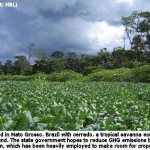
Brussels – Countries of the Sunbelt (located within +/- 35° latitude around the equator) represent today about 75% of the world’s population and 40% of the global electricity demand. Furthermore, about 80% of the forecasted growth of the world electricity demand in the coming 20 years will originate from fast developing economies in that region. Characterized by an intense solar irradiation and often, high electricity prices, countries of the Sunbelt, where PV has a unique competitive potential, constitute an immense opportunity for PV to become mainstream by 2020 and to become a major electricity source by 2030.
That is the main conclusion of the study presented today by the European Photovoltaic Industry Association (EPIA), “Unlocking the Sunbelt Potential of Photovoltaics”. Carried out with the support of the Strategy Consulting Firm A.T. Kearney, this report looks in detail at 66 out of the 148 countries which compose the Sunbelt, representing 5 billion people and 95% of the area’s population. Despite the exceptional solar irradiation registered in these countries, at present they represent only 9% of the global installed PV capacity which clearly shows that the high solar potential of Sunbelt countries remains largely untapped.
“This study is of considerable importance as it highlights, with demonstrated facts and figures, the immense potential of PV in Sunbelt countries,” stated EPIA’s Secretary General, Adel El Gammal. “PV, with its unique fundamentals, increasingly constitutes a democratic, clean and competitive alternative to conventional fuels and will certainly become a mainstream electricity source capable of meeting the soaring electricity demand of growing economies in the Sunbelt region and elsewhere in the world,” he added.
The study, which looks for each country at criteria such as investment attractiveness, and the competitive potential of PV, identifies 3 typical deployment scenarios. It shows that the PV potential of the Sunbelt countries could range, depending on the scenario, from 60 to 250 GW by 2020, and from 260 to 1,100 GW in 2030, representing 27-58% of the forecasted global installed PV capacity by then. With system prices expected to decrease by up to 66% in 2030, PV electricity, already competitive today with some peak generation technologies in a number of countries, would see its generation costs dropping fast.
“Based on further technology development, it is safe to conclude that modules and inverters will follow the respective well-known Price Experience Curve which will result in a PV generation cost of 6 to 12 €cts/kWh by 2020 and as low as 4 to 8 €cts/kWh by 2030,” explained Winfried Hoffmann, Vice-President of EPIA. “Already in 2020, PV will be competitive to the generation cost of clean coal power stations while in 2030 all conventional power generation technologies will be more expensive compared to PV,” he further added.
Apart from China, all the top 10 major PV markets in the world are currently located outside the Sunbelt region. EPIA’s report highlights the need to encourage the PV industry and Sunbelt governments alike to ensure the capacity to serve these soon-to-be very important markets and increase their commitment to significantly contribute to domestic economic value creation.
In addition to providing a detailed economic analysis supporting the various deployment scenarios, the study also highlights a series of recommendations to enable the full realization of the potential of PV in the Sunbelt. As commented by Laurent Dumarest, Vice-President of Strategic Management Consultancy firm, A.T. Kearney, “Governments and policy makers are advised to consciously include PV as an explicit part of their energy strategy and planning. They should also collaborate with development banks and private financial institutions to facilitate technology adoption whilst improving the transfer of knowledge.”
This study was done in collaboration with the strategic management consultancy A.T. Kearney, and with the support of the Alliance for Rural Electrification (ARE) and the Asociación de la Industria Fotovoltaica (ASIF).
Click here to download the full study: http://www.epia.org/index.php?id=18

About EPIA
With over 220 members drawn from across the entire solar photovoltaic (PV) sector, the European Photovoltaic Industry Association is the world’s largest photovoltaic industry association. EPIA members are present throughout the whole value-chain: from silicon, cells and module production to systems development and PV electricity generation as well as marketing and sales. EPIA’s mission is to deliver a distinct and valuable service driven from the strength of a single photovoltaic voice. For more information, visit www.epia.org.
Source: EPIA Press Release dated October 28, 2010.














